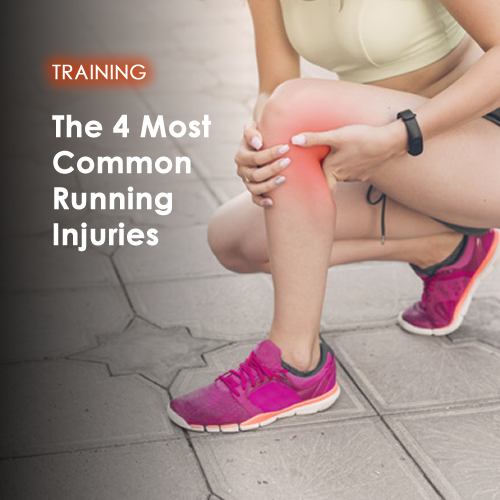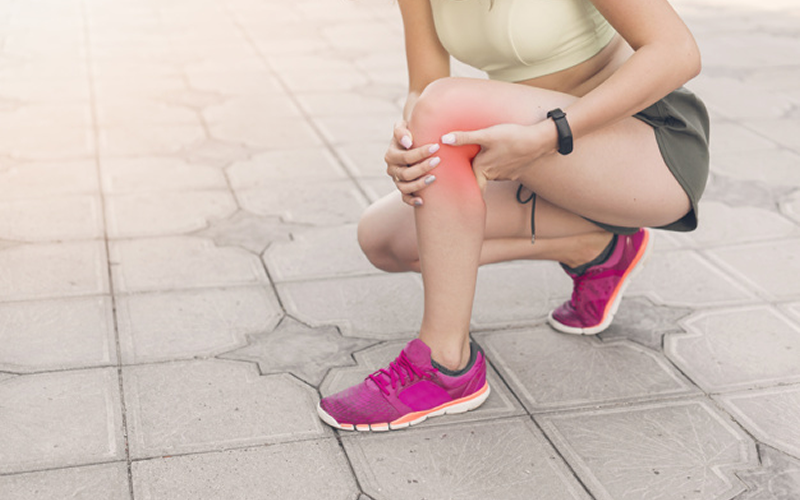Running has become one of the most popular ways to improve and maintain fitness. In fact, more than 40 million Americans run on a regular basis.
Although running is a great way to stay active, many runners have to deal with an injury at some point. Most running injuries are caused by repetitive stress.
Here are the 4 most common types of running injuries, the typical symptoms, and treatment options.
1 Runner’s knee, or patellofemoral syndrome, is a general term that refers to pain in the front of your knee or around your kneecap. It’s a common overuse injury in sports that involve running or jumping.
Weakness in your hips or the muscles around your knee can put you at a higher risk of developing runner’s knee.
Runner’s knee can cause pain that:
- is dull and can be felt in one or both knees
- ranges from mild to very painful
- gets worse with prolonged sitting or exercise
- gets worse when jumping, climbing stairs, or squatting
This type of injury may also cause cracking or popping sounds after prolonged periods of being stationary.
A doctor can often diagnosis runner’s knee with a physical exam but may recommend an X-ray to rule out other conditions. A physical therapist can give you a specific treatment plan to treat a runner’s knee injury.
2 Achilles tendinitis refers to inflammation of the tendon that connects your calf muscle to your heel. It may happen after increasing your mileage or the intensity of your running.
If left untreated, Achilles tendinitis increases your risk of rupturing your Achilles tendon. If this tendon is torn, it usually requires surgery to repair it.
Common symptoms of Achilles tendinitis include:
- dull pain in your lower leg above your heel
- swelling along your Achilles tendon
- limited range of motion when flexing your foot toward your shin
- a warm feeling over the tendon
Your iliotibial band, commonly referred to as your IT band, is a long piece of connective tissue that runs from your outer hip to your knee. This band of tissue helps stabilize your knee when you’re walking or running.
3 IT band syndrome is caused by repetitive friction of the IT band rubbing against your leg bone. It’s very common in runners due to tight IT bands. Weak gluteal muscles, abdominals, or hips may also contribute to this condition.
IT band syndrome causes sharp pain on the outer side of your leg, usually just above your knee. Your IT band may also be tender to the touch. The pain often gets worse when you bend your knee.
4 Shin splints (tibial stress syndrome) refers to pain that occurs in the front or the inner parts of your lower legs, along your shinbone. Shin splints can happen when you increase your running volume too quickly, especially when running on hard surfaces.
In most cases, shin splints aren’t serious and go away with rest. However, if left untreated, they can develop into stress fractures.
Symptoms of shin splints can include:
- a dull pain along the front or inner part of your shinbone
- pain that gets worse when you exercise
- tenderness to the touch
- mild swelling
Shin splints often get better with rest or by cutting back on how frequently or how far you run.
Find this article interesting and useful? Share it! 🙂
Our mission at PushPointe is to motivate, educate, and inspire you to live the fit life. If you don’t already subscribe to the world’s most popular health and fitness site, you’re invited to join thousands in our health conscious community. Have a comment, question, or idea? Email us at info@pushpointe.com.
Live the Fit Life. Subscribe to Our Bi-Weekly Email











